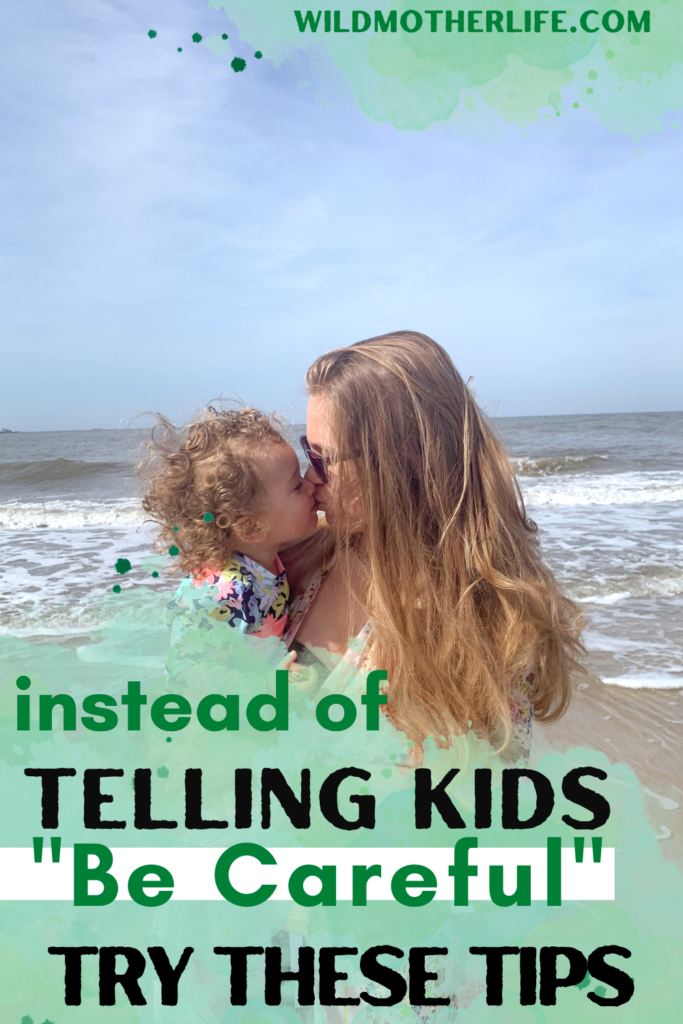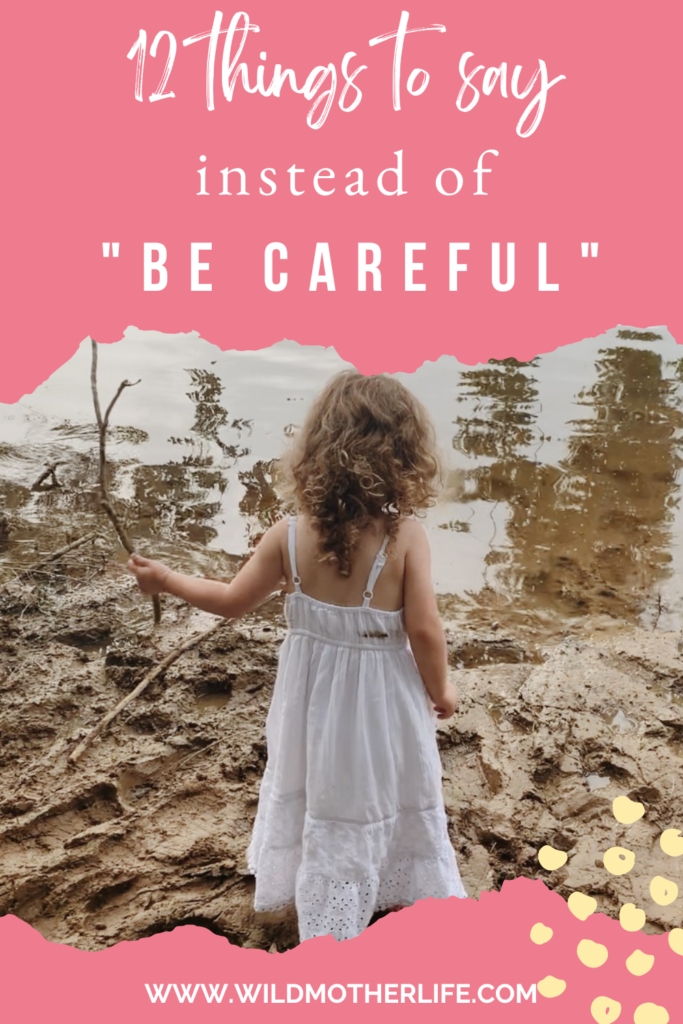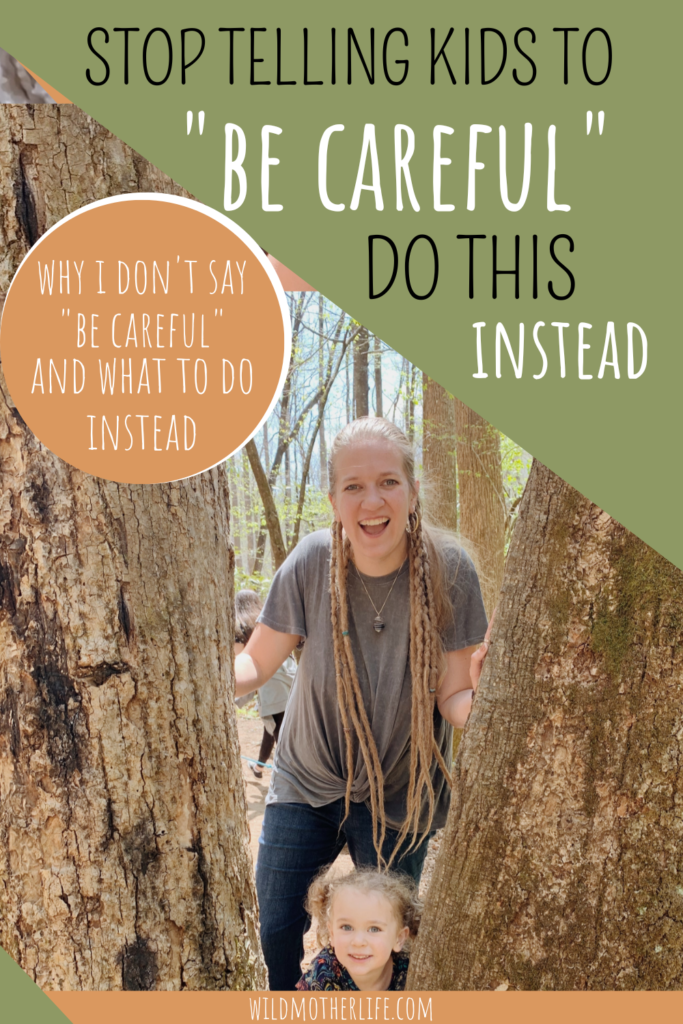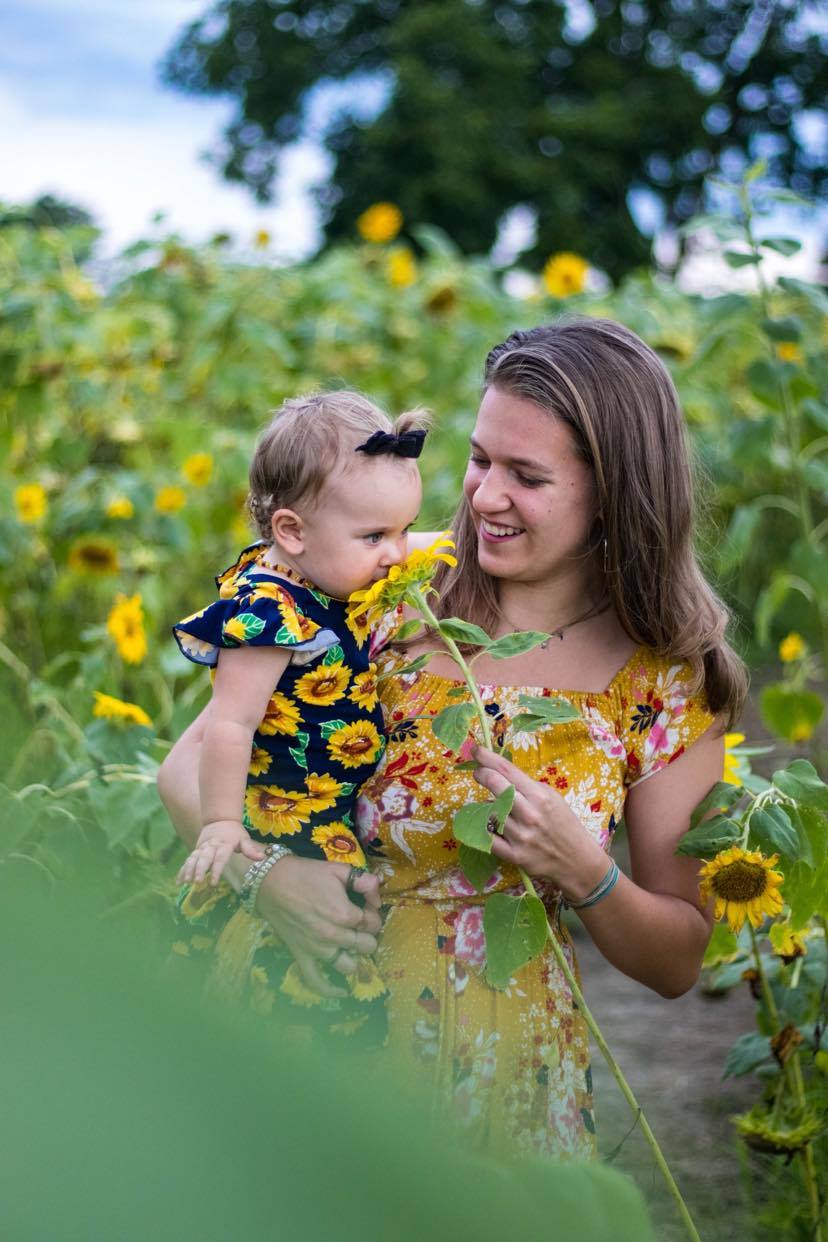
This post may contain affiliate links. I only recommend products that I personally use and love!
For context, please read Part I of this post: Stop telling kids to be careful (here’s why)
To briefly summarize, I don’t tell my kids the phrase “be careful” because:
- I want them to learn their own limits through play and experimentation.
- I don’t think the phrase “be careful” is helpful feedback for children.
- It only projects our own insecurities onto them.
So! In a situation where my child is doing “risky play” or when it’s a situation where I start feeling anxious and the urge to hover over my child and say “be careful” starts coming up; what do I do?
What do I do instead of saying ‘be careful’?
1. Pause and observe before reacting
Observing goes such a long way when it comes to parenting kids.
It’s definitely a Montessori and respecting parenting principle to not just jump in and intervene on something that your child is doing or an interaction that they’re having.
First observe them.
Think of things from their perspective and consider what’s happening in their world. And of course, observing them doesn’t have to take a long time, but you can always take a pause before reacting to something that your child is doing.
A main Montessori principle is to trust your child that they intrinsically know what they need to be working on, what interests they need to pursue, and what curiosities they need to follow in order to develop the next skills they need to learn and grow.
Kids are curious and of course there are going to be accidents along the way. That’s how we learn! Trying and failing is how we learn what we’re capable of.
Here is a quote from one from my favorite parenting books called The Montessori Toddler:
“are we constantly worrying about how our child is developing? Or whether they will hurt themselves? Can we practice setting aside those worries about the future and enjoy where they are today on their own unique journey?”
This is a great reminder to be present and observe them if you start to feel the urge rising to say “be careful”.
This is the first step that I do when I feel the urge to be overbearing – pause. observe.
2. Analyze The Actual Risk
The second thing I do instead of saying “be careful” is I analyze the actual risk. What am I worried about and what is the actual risk if my fears come true?
I find that the majority of the time, the actual risk if my fear came true isn’t that great. It may just be inconvenient for me.
A good example of this – If my fear came true right now and my child slips….are they going to break their arm? Or more likely will they just get wet in a puddle? Those are big differences!
During the time that I’m observing, I try to weigh the cost benefit – the pros and cons – and evaluate if this is actually something that I need to be worried about.
3. Move physically closer
If you feel like something your child is doing might be too risky, a simple solution is to move your body closer to them so that you could intervene if they trip/fall/slip etc.
There’s a playground that I like to take my toddler to that’s nature themed so it’s all wood and surrounded by woods. There are definitely some parts of this playground that are not made for a two year old.
I don’t want to project that on her, and for the most part she’s really good about knowing her limits and not even trying things over her limits. If she does want to attempt something that I deem too challenging for her instead of saying “you’re too little for that, that’s only for big kids!” – I just move my body physically closer and stand under her so that I could intervene and catch her if my anxious thoughts were to come true.
Most of the time that looks like me walking around and following her and going up on the playground with her.
Of course, as their parent, you know your child best so I’m sure there are some kids with different personalities who think they have no limits and will just do anything. This could be a little more challenging, but I would still encourage you to let them experiment within safe reason. The way that they learn limits is by testing and being curious.
4. Point out the danger that you see
I will say something practical like “oh wow you climbed up there pretty high. How does your body feel? Do you feel safe?”
or
“Oh look there’s a pile of ants right here, make sure you don’t step on them!”
Practical instruction rather than vague “be careful” or “I’m so scared youre going to fall” and projecting fear.
5. Set a limit if needed
I wouldn’t encourage this all the time, but obviously there are situations where a limit is needed. Maybe your child keeps trying to do something and you just have a really bad feeling about it, or don’t feel that it’s safe. In cases like this, of course you can set a limit and boundary and just say “hey we’re aren’t going to do this today and here’s why”.
Those are all my tips for why I don’t say be careful to my children and what I say instead. I hope it was helpful. Let me know in the comments if this is an approach that you try to follow with your kids too!
Other Conscious Parenting Article’s You’ll Want to Check Out:
- Stop Telling Kids To Be Careful
- How To Prepare Your Toddler For A Homebirth
- Should Children Go Barefoot? Child Foot Development



Hey, I'm Victoria!
I'm so glad you're here, sweet mother!
My goal is to inspire you to remember your primal roots & live a WILD life in alignment with nature. On my blog I empower you to use herbs and natural remedies to keep your family healthy, teach you how to eat a nourishing, traditional foods diet, and inspire you to raise your babies consciously and respectfully.

